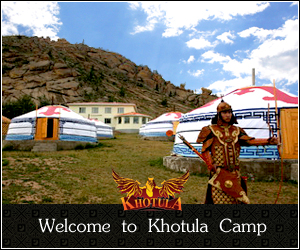Partnership for private sector development
Participants at the fourth bi-annual, technical. 'External Partners Technical Meeting on Private Sector Development.' in State House on January 28 to 29,discussed Mongolia's National Development Strategy targetting private sector development including: improv-ing labor productivity and technology:
Participants at the fourth bi-annual, technical. 'External Partners Technical Meeting on Private Sector Development.' in State House on January 28 to 29,discussed Mongolia's National Development Strategy targetting private sector development including: improv-ing labor productivity and technology: increased supply of skilled employees: reduced risk with a more favorable private sector environment: strengthened regional private sector development and State and government support for private sector partnerships. More than 200 delegates including over 70 representatives from foreign and domestic economic organizations, business unions and private sectors took part in the meeting organized by the Mongolian government and the World Bank.
The meeting explored Mongolia's private sector development strategies with far-sighted technologies; professional and skilled personnel: further development of production and services based on the country's raw materials, mineral resources and natural products meeting domestic requirements and world market demands so the country could attain standards of average-income countries. Finance Minister. Ch. Ulaan said the meeting identified a united policy for private sector development and outlined future prospects. He said defining Government participation was most important and the State and government must support legal conditions and foundations for market competitiveness. The present medium-term strategy embraced the period up to 2015. He said State, government and the private sector had been active in defining the policy and a joint council had been formed involving government and external partners and private sectors.
World Bank Mongolia resident representative. Arshed Saed said a good start had been made by working out with representatives of other professional unions and the private sector, the basic content of the private sector development strategy. Ministry of Industry and Trade, department on light industry chief, D. Badarch emphasized the importance of small to medium-sized enterprises in the development of a private sector strategy. He said 99 percent of 48.879 economic organizations operating on a national scale were engaged in small and medium production,
The new strategies towards private sector development aim to create an economically strong nation with a favorable, competitive business atmosphere. Areas targetted included an improved tax. customs, professional inspection and associated activities (licenses and logistics), environment. The government attached specific attention to supporting private sector development on a long-term basis, where the government role would be through joint partnerships with private sector organizations. Other areas targetted in the new strategy were intensive development of the Mongolian economy with mineral deposit activities; increasing labour in the small industry sector; simplification for registration of new company funding for small production and better conditions for international trading.
Specific targets included meat export products and processes with better sanitation and hygiene: Attention to environmental protection; increased attention to regulation and coordination of the workforce by following experiences of other countries; increased attention to Mongolia-specific characteristics such as a sparse population and limited do-mestic markets were important issues with looking at external development to achieve the national development strategies and educated citizens. Coordination of the private and State sectors with external partnerships was seen as significant for Mongolia to become competitive on the world stage.
Issues related to energy supply, mining and macro economic prospects were debated at the meeting. Power stations generated 79.8 percent of heating, 12.8 percent was imported. 4.4 percent was produced with diesel fuel. 2.7 percent by hydro power stations and 0.35 percent by solar and wind generators.
A World Bank study completed three years ago demanded increasing tariffs by 60 percent, but was not supported by Cabinet and the electricity prices over recent years increased 4.3 percent. Macro mining, by January 1. 2008 had 54.000 private miners working on a permanent basis with 30.000 to 50.000 seasonal workers. 25,000 worked in large, official mines. Regulation of mining activities of miners operating in 16 aimags would play an important role in the socio economic development of macro mining organizations. The SIDA underlined environmentally-friendly technology with less costs and more effective for the separation of gold and other metals from copper.
At a press conference held by the Work Bank prior to the technical meeting January 25, Ministry of Industry and Trade state secretary, B. Nyamsuren. said the Government and private sector must work in cooperation and needed a strategy to achieve this goal. He said even though there was a service sector for processing and production they were not so well developed. He said the government would not support production of natural goods. Tie said Mongolia as a nation landlocked between two big powers, with a harsh continental climate and poor infrastructure we sought donor's help and assistance. He said the first priority was to improve the legal environment, reduce bureaucracy, reduce air pollution, improve education and training, educate and train qualified professionals and there were areas where donours needed to direct their attention.
World Bank director in Mongolia. Dr David Dollar said recognition that the private sector played an important role in stabilizing intensive economic growth and shifting the many economic branches to development and progress and the potential for external risk situations was important. He said sustainable policies, rules and regulatory structures were imperative to address risk. He said although significant steps had been taken in recent years, economic growth relied on the growth of the raw material prices and new jobs depended on economic diversification. He said mining had the greatest potential to contribute to Mongolia's economic growth.
Almost 80 percent of Mongolia's GDP is produced by the private sector with 88 percent of the total workforce. Mining and processing and agricultural production in 2007 comprised 52 percent of the GDP and the processing industries, construction, electricity and heating production made up nine percent. The GDP per capita in 2005 was USD 738.1 increasing in 2007 to USD 1480.
B.Oyundelger
The MONGOL MESSENGER












